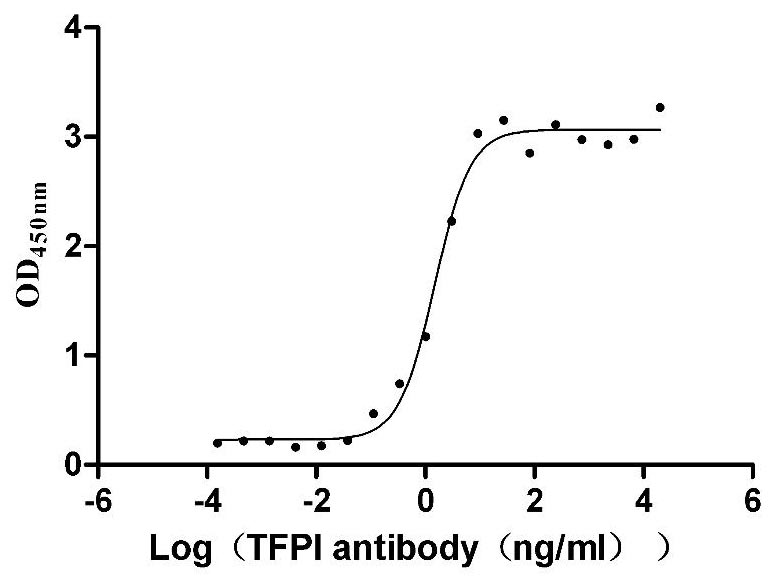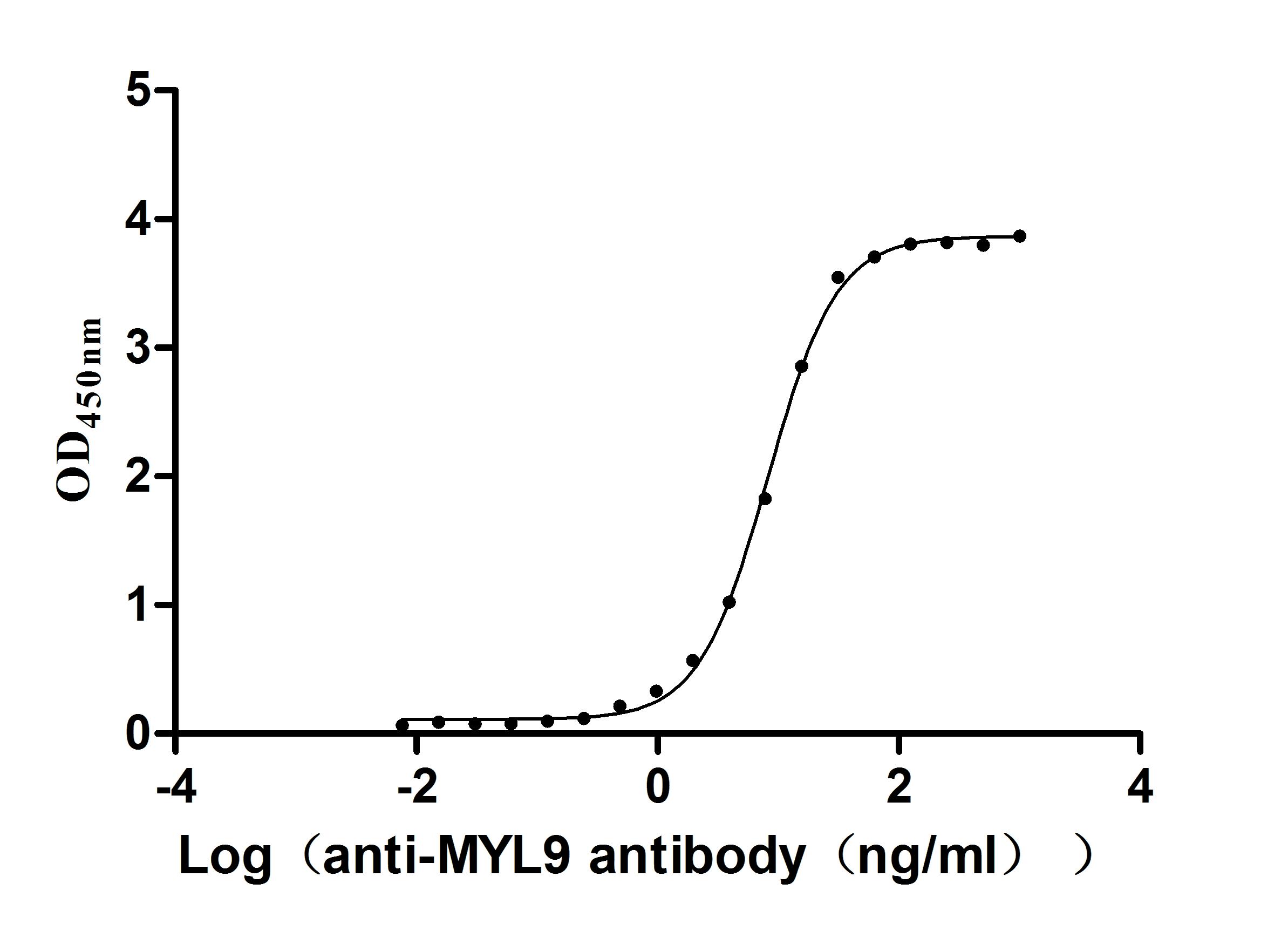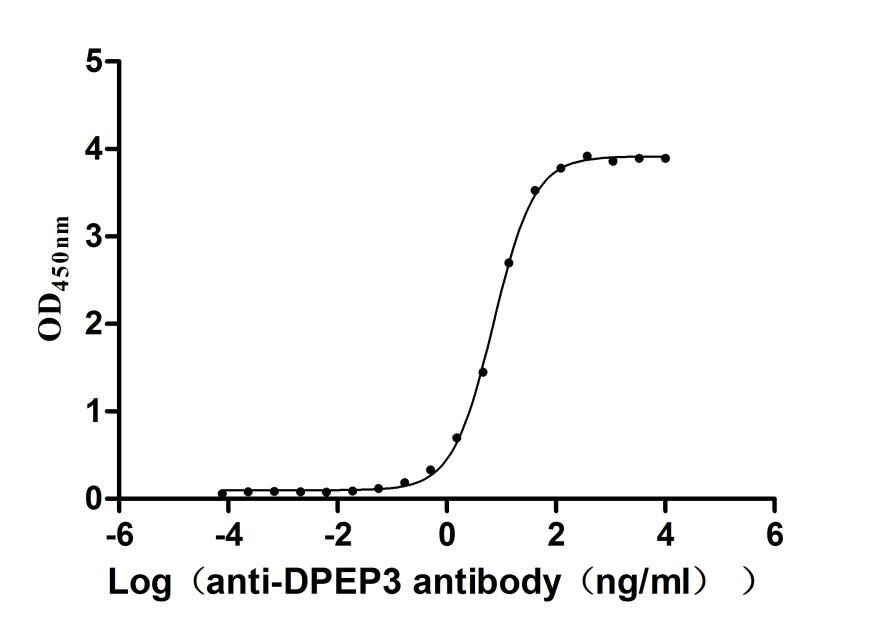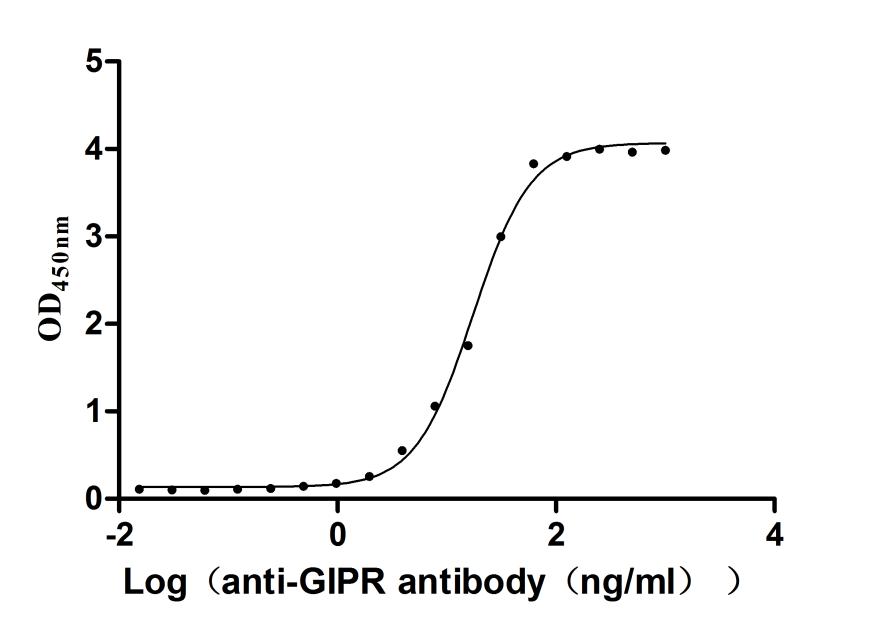Recombinant Human herpesvirus 1 Transcriptional regulator ICP22 (US1)
-
中文名稱:Recombinant Human herpesvirus 1 Transcriptional regulator ICP22 (US1)
-
貨號:CSB-YP361276HWY
-
規(guī)格:
-
來源:Yeast
-
其他:
-
中文名稱:Recombinant Human herpesvirus 1 Transcriptional regulator ICP22 (US1)
-
貨號:CSB-EP361276HWY
-
規(guī)格:
-
來源:E.coli
-
其他:
-
中文名稱:Recombinant Human herpesvirus 1 Transcriptional regulator ICP22 (US1)
-
貨號:CSB-EP361276HWY-B
-
規(guī)格:
-
來源:E.coli
-
共軛:Avi-tag Biotinylated
E. coli biotin ligase (BirA) is highly specific in covalently attaching biotin to the 15 amino acid AviTag peptide. This recombinant protein was biotinylated in vivo by AviTag-BirA technology, which method is BriA catalyzes amide linkage between the biotin and the specific lysine of the AviTag.
-
其他:
-
中文名稱:Recombinant Human herpesvirus 1 Transcriptional regulator ICP22 (US1)
-
貨號:CSB-BP361276HWY
-
規(guī)格:
-
來源:Baculovirus
-
其他:
-
中文名稱:Recombinant Human herpesvirus 1 Transcriptional regulator ICP22 (US1)
-
貨號:CSB-MP361276HWY
-
規(guī)格:
-
來源:Mammalian cell
-
其他:
產(chǎn)品詳情
-
純度:>85% (SDS-PAGE)
-
基因名:ICP22
-
Uniprot No.:
-
別名:ICP22; US1; Transcriptional regulator ICP22; Immediate-early protein IE68; Infected cell protein 22; ICP22
-
種屬:Human herpesvirus 1 (strain 17) (HHV-1) (Human herpes simplex virus 1)
-
蛋白長度:full length protein
-
表達(dá)區(qū)域:1-420
-
氨基酸序列MADISPGAFA PCVKARRPAL RSPPLGTRKR KRPSRPLSSE SEVESDTALE SEVESETASD STESGDQDEA PRIGGRRAPR RLGGRFFLDM SAESTTGTET DASVSDDPDD TSDWSYDDIP PRPKRARVNL RLTSSPDRRD GVIFPKMGRV RSTRETQPRA PTPSAPSPNA MLRRSVRQAQ RRSSARWTPD LGYMRQCINQ LFRVLRVARD PHGSANRLRH LIRDCYLMGY CRARLAPRTW CRLLQVSGGT WGMHLRNTIR EVEARFDATA EPVCKLPCLE TRRYGPECDL SNLEIHLSAT SDDEISDATD LEAAGSDHTL ASQSDTEDAP SPVTLETPEP RGSLAVRLED EFGEFDWTPQ EGSQPWLSAV VADTSSVERP GPSDSGAGRA AEDRKCLDGC RKMRFSTACP YPCSDTFLRP
-
蛋白標(biāo)簽:Tag?type?will?be?determined?during?the?manufacturing?process.
The tag type will be determined during production process. If you have specified tag type, please tell us and we will develop the specified tag preferentially. -
產(chǎn)品提供形式:Lyophilized powder
Note: We will preferentially ship the format that we have in stock, however, if you have any special requirement for the format, please remark your requirement when placing the order, we will prepare according to your demand. -
復(fù)溶:We recommend that this vial be briefly centrifuged prior to opening to bring the contents to the bottom. Please reconstitute protein in deionized sterile water to a concentration of 0.1-1.0 mg/mL.We recommend to add 5-50% of glycerol (final concentration) and aliquot for long-term storage at -20℃/-80℃. Our default final concentration of glycerol is 50%. Customers could use it as reference.
-
儲存條件:Store at -20°C/-80°C upon receipt, aliquoting is necessary for mutiple use. Avoid repeated freeze-thaw cycles.
-
保質(zhì)期:The shelf life is related to many factors, storage state, buffer ingredients, storage temperature and the stability of the protein itself.
Generally, the shelf life of liquid form is 6 months at -20°C/-80°C. The shelf life of lyophilized form is 12 months at -20°C/-80°C. -
貨期:Delivery time may differ from different purchasing way or location, please kindly consult your local distributors for specific delivery time.Note: All of our proteins are default shipped with normal blue ice packs, if you request to ship with dry ice, please communicate with us in advance and extra fees will be charged.
-
注意事項:Repeated freezing and thawing is not recommended. Store working aliquots at 4°C for up to one week.
-
Datasheet :Please contact us to get it.
靶點(diǎn)詳情
-
功能:Functions as a general transcriptional regulator of cellular and viral mRNAs mainly by mediating changes on the host RNA polymerase II. One change, which is UL13 independent, is the rapid loss of Pol II forms bearing Ser-2 phosphorylation. A second change, which is UL13 dependent, is the appearance of an intermediate form of Pol II that differs from the normal hypo- and hyperphosphorylated forms. These Pol II modifications immediately inhibit host genome transcription, leading to cell cycle deregulation and loss of efficient antiviral response. Recruits also cellular transcription elongation factors to viral genomes for efficient transcription elongation of viral genes.
-
基因功能參考文獻(xiàn):
- study demonstrate interaction of ICP22 with a subset of cellular proteins known to be involved in transcription elongation; determined that ICP22 is required to recruit the FACT complex and other transcription elongation factors to viral genomes and that in the absence of ICP22 viral transcription is globally reduced late in productive infection, due to an elongation defect PMID: 28611249
- The results indicate that discrete regions of ICP22 interact with either CDK9 or pol II and that ICP22 interacts directly with CDK9 to inhibit expression of host cell genes. PMID: 25233083
- ICP22 but not US1.5 is required for efficient acute replication in mice and VICE domain formation. PMID: 24089574
- ICP22 mediates several striking changes to important host nuclear systems, including those involved in RNA polymerase II transcription, cell cycle regulation and protein quality control, promoting productive virus infection. PMID: 23464370
- ICP22 interacts with and blocks the recruitment of P-TEFb to viral promoter regions, which inhibits transcription of the viral gene promoters. PMID: 23029222
- It has been shown to be required for efficient expression of early (E) genes and a subset of late (L) genes. PMID: 20960278
- Data show that VICE domain formation in Vero and other cells requires the HSV-1 immediate-early protein ICP22. PMID: 20032172
- ICP22, the product of the Us1 gene, is localized to small dense nuclear bodies and is paired with the SC-35 domain in the nucleus, (ii) ICP22 localization in a punctate state requires completion of the main sequence which includes the 1-320th amino acids PMID: 16877770
- findings show ICP22 is responsible for the loss of RNA polymerase II forms bearing serine 2 phosphorylation during the immediate-early phase of infection PMID: 17344289
- cdc25C phosphatase plays a role in viral replication and that this role extends beyond its function of activating cdc2 for initiation of the ICP22-dependent cascade for upregulation of gamma(2) gene expression. PMID: 18272575
- The authors conclude that cdk9 plays a critical role in the optimization of expression of genes regulated by ICP22 and that one function of cdk9 in HSV-1-infected cells may be to bring ICP22 into the RNA Pol II transcriptional complex. PMID: 18753202
- The results genetically uncouple ICP22's effects on Pol II from its effects on viral late gene expression. This suggests that these two functions of ICP22 may be due to distinct activities of the protein. PMID: 18971282
- Expression of ICP22 was sufficient to prevent transactivation of reporter genes by ICP0. PMID: 19535441
- expression of IC22 and of U(S)1.5 can occur independently of each other, and U(S)1.5 translation initiates at M90 of the ICP22 ORF PMID: 19570862
顯示更多
收起更多
-
亞細(xì)胞定位:Host nucleus. Note=Localizes in small nuclear bodies early in infection then moves to a more diffuse distribution in viral compartments as infection progresses.
-
蛋白家族:Herpesviridae ICP22 family
-
數(shù)據(jù)庫鏈接:
KEGG: vg:2703435
Most popular with customers
-
Recombinant Human Tissue factor pathway inhibitor (TFPI), partial (Active)
Express system: Mammalian cell
Species: Homo sapiens (Human)
-
Recombinant Human Angiopoietin-2 (ANGPT2) (Active)
Express system: Mammalian cell
Species: Homo sapiens (Human)
-
Recombinant Mouse Claudin-18.2 (Cldn18.2)-VLPs (Active)
Express system: Mammalian cell
Species: Mus musculus (Mouse)
-
Recombinant Human Myosin regulatory light chain 12B (MYL12B) (Active)
Express system: E.coli
Species: Homo sapiens (Human)
-
Recombinant Human CD70 antigen (CD70), partial (Active)
Express system: Mammalian cell
Species: Homo sapiens (Human)
-
Recombinant Human Dipeptidase 3(DPEP3), partial (Active)
Express system: Mammalian cell
Species: Homo sapiens (Human)
-
Recombinant Human Gastric inhibitory polypeptide receptor(GIPR),partial (Active)
Express system: Mammalian cell
Species: Homo sapiens (Human)



-AC1.jpg)
-AC1.jpg)













